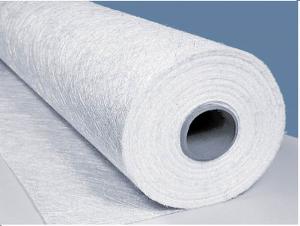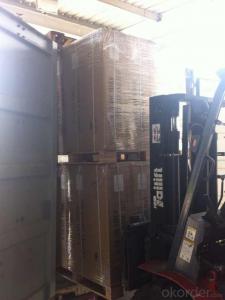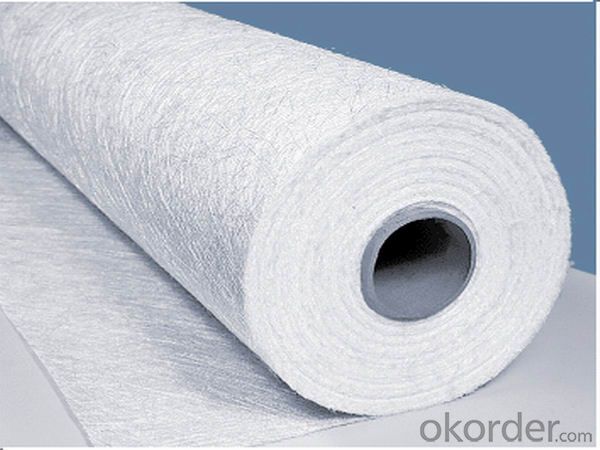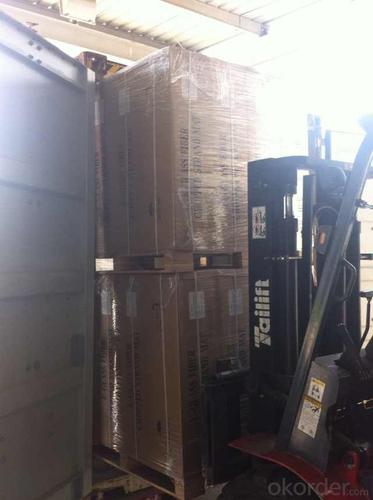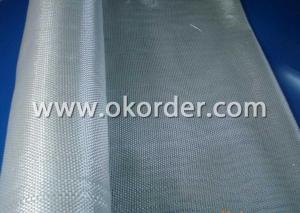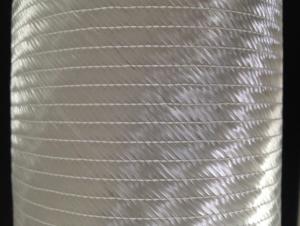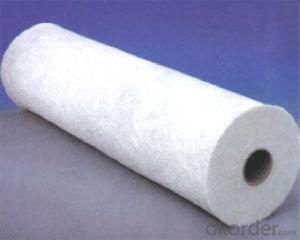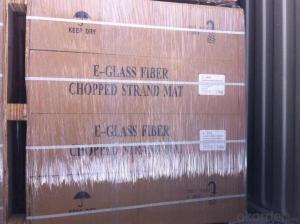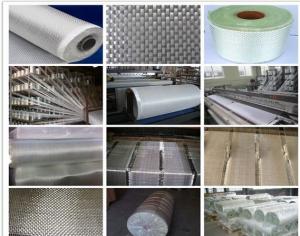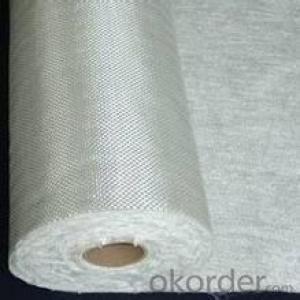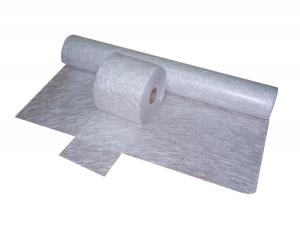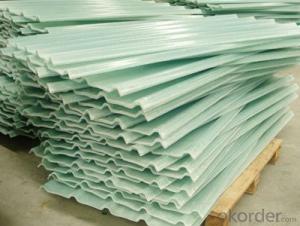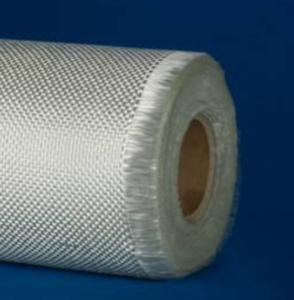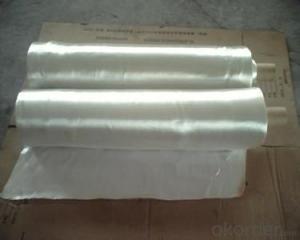E Glass Fiber CSM (Powder) Fiberglass Fabrics
- Loading Port:
- China Main Port
- Payment Terms:
- TT or LC
- Min Order Qty:
- 22160 kg
- Supply Capability:
- 200000Kg Per Month kg/month
OKorder Service Pledge
OKorder Financial Service
You Might Also Like
1.Brief Introduction
E-Glass Powder Chopped Strand Mat is made of randomly distributed chopped strands held together by a powder binder.
It is compatible with UP, VE, EP, PF resins.
The roll width ranges from 50mm to 3300mm.
It is designed for use in hand lay-up, filament winding, compression molding and continuous laminating processes. Its end-use applications include boats, bath equipment, automotive parts, chemical corrosion resistant pipes, tanks, cooling towers and building components
2.Product Features
Fast breakdown in styrene
High tensile strength, allowing for use in hand lay-up process to produce large-area parts
Good wet-through and fast wet-out in resins, rapid air lease
Superior acid corrosion resistance
3.Product Specifications
Property | Area Weight | Moisture Content | Size Content | Breakage Strength | Width |
| (%) | (%) | (%) | (N) | (mm) |
Property | IS03374 | ISO3344 | ISO1887 | ISO3342 |
|
EMC80P | ±7.5 | ≤0.20 | 8-12 | ≥40 | 50-3300 |
EMC100P | ≥40 | ||||
EMC120P | ≥50 | ||||
EMC150P | 4-8 | ≥50 | |||
EMC180P | ≥60 | ||||
EMC200P | ≥60 | ||||
EMC225P | ≥60 | ||||
EMC300P | 3-4 | ≥90 | |||
EMC450P | ≥120 | ||||
EMC600P | ≥150 | ||||
EMC900P | ≥200 |
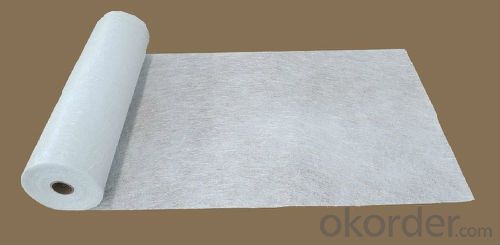
4.FAQ
Packaging:
Each Chopped Strand Mat is wound onto a paper tube which has an inside diameter of 76mm and the mat roll has a diameter of 275mm. The mat roll is wrapped up with plastic film,and then packed in a cardboard box or wrapped up with kraft paper. The rolls can be vertically or horizontally placed. For transportation, the rolls can be loaded into a cantainer directly or on pallets.
Storage:
Unless otherwise specified, Chopped Strand Mat should be stored in a dry, cool and rain-proof area. It is recommended that the room temperature and humidity should be always maintained at 15℃~35℃ and 35%~65% respectively.
- Q: Can fiberglass fabrics be used for reinforcement in furniture or fixtures?
- Yes, fiberglass fabrics can be used for reinforcement in furniture or fixtures. Fiberglass fabrics are known for their strength, durability, and flexibility, making them ideal for reinforcing various types of furniture and fixtures. They can be used to reinforce the frames of chairs, sofas, and other seating furniture to provide additional support and stability. Fiberglass fabrics can also be used to reinforce the surfaces of tables, countertops, and shelves, enhancing their ability to withstand heavy loads and resist cracking or warping. Furthermore, fiberglass fabrics can be molded into different shapes and sizes, allowing them to be used for reinforcing various types of furniture or fixtures.
- Q: Which is more durable, stone cotton or glass cloth?
- Asbestos is a specialized mineral that can be obtained by processing. Glass fiber is usually fused with quartz and alkali. The more alkali is added, the worse the performance is. Many processes require alkali free fiberglass.If you want to talk, open another question
- Q: Can fiberglass fabric be used for making gaskets or seals?
- Yes, fiberglass fabric can be used for making gaskets or seals. Fiberglass fabric is known for its high strength and durability, making it an ideal material choice for gasket and seal applications. Its ability to withstand high temperatures, resist chemicals, and provide insulation properties make it suitable for use in various industries such as automotive, aerospace, and manufacturing. Additionally, fiberglass fabric can be easily cut and molded into different shapes and sizes to fit specific gasket or seal requirements. Overall, fiberglass fabric offers excellent sealing capabilities and is a reliable choice for creating gaskets and seals.
- Q: What's the price of fiberglass fabric penetrant?
- The company's main fluorocarbon series surfactant, various types of oilfield additives, fire additives, paint additives, rubber additives, fungicides and so on.
- Q: What is the "three proof cloth"? How to correctly use the three proof cloth?
- Three proof cloth is PVC coated glass fiber cloth.
- Q: Is fiberglass fabric resistant to chemicals used in construction industry?
- Generally, chemicals commonly used in the construction industry do not affect fiberglass fabric. Fiberglass fabric is composed of woven glass fibers that possess natural resistance to numerous chemicals, including acids, alkalis, solvents, and oils. This resistance enables fiberglass fabric to be an excellent choice for insulation, reinforcement, and protective barriers in construction applications. However, it is crucial to acknowledge that the level of resistance may differ depending on the type and concentration of the chemical in question. Consequently, it is advisable to seek guidance from the manufacturer or supplier regarding the specific compatibility of fiberglass fabric with certain chemicals before incorporating it into construction projects.
- Q: Can fiberglass fabric be used for making air ducts?
- Yes, fiberglass fabric can be used for making air ducts. It is a lightweight, durable, and fire-resistant material that is commonly used in HVAC systems for its excellent insulation properties.
- Q: Is fiberglass fabric resistant to chemicals in mining operations?
- Fiberglass fabric, in general, exhibits resistance to chemicals commonly encountered in mining operations. Its exceptional chemical resistance is well-known, making it a preferred option for diverse industrial uses, such as mining operations. It possesses high resistance against a wide array of chemicals typically found in mining environments, including acids, alkalis, solvents, and corrosive substances. This resistance guarantees the fabric's durability and unaffected state even after exposure to chemicals, offering a dependable and enduring solution for protective clothing, equipment covers, and other mining operation applications.
- Q: What cloth is used for the anticorrosion of fire pipes?
- Use glass fiber cloth, three oil, two cloth, anticorrosive.
- Q: What type of needle is used for sewing fiberglass fabric?
- The type of needle commonly used for sewing fiberglass fabric is a heavy-duty needle. This needle is specifically designed to withstand the abrasiveness of fiberglass and has a sharp point and a thick shaft to penetrate through the dense fibers of the fabric. It is usually made of strong and durable materials like stainless steel or titanium to ensure that it does not break or bend during the sewing process. Additionally, some sewers may choose to use a needle with a Teflon coating to reduce friction and prevent the fiberglass fabric from sticking to the needle. Overall, using a heavy-duty needle is essential when sewing fiberglass fabric to ensure that the needle can effectively stitch through the tough fibers without causing any damage or breaking.
Send your message to us
E Glass Fiber CSM (Powder) Fiberglass Fabrics
- Loading Port:
- China Main Port
- Payment Terms:
- TT or LC
- Min Order Qty:
- 22160 kg
- Supply Capability:
- 200000Kg Per Month kg/month
OKorder Service Pledge
OKorder Financial Service
Similar products
Hot products
Hot Searches
Related keywords
